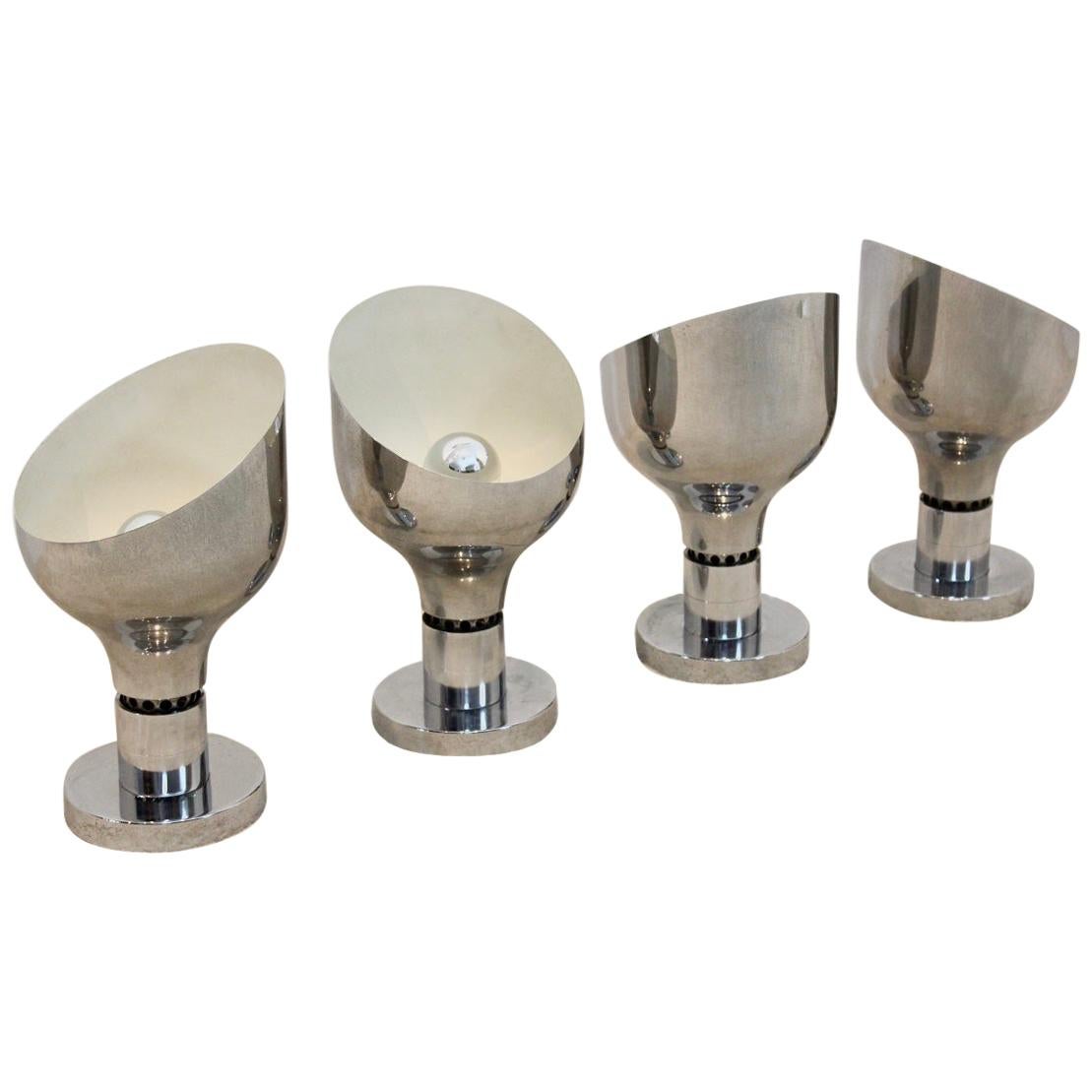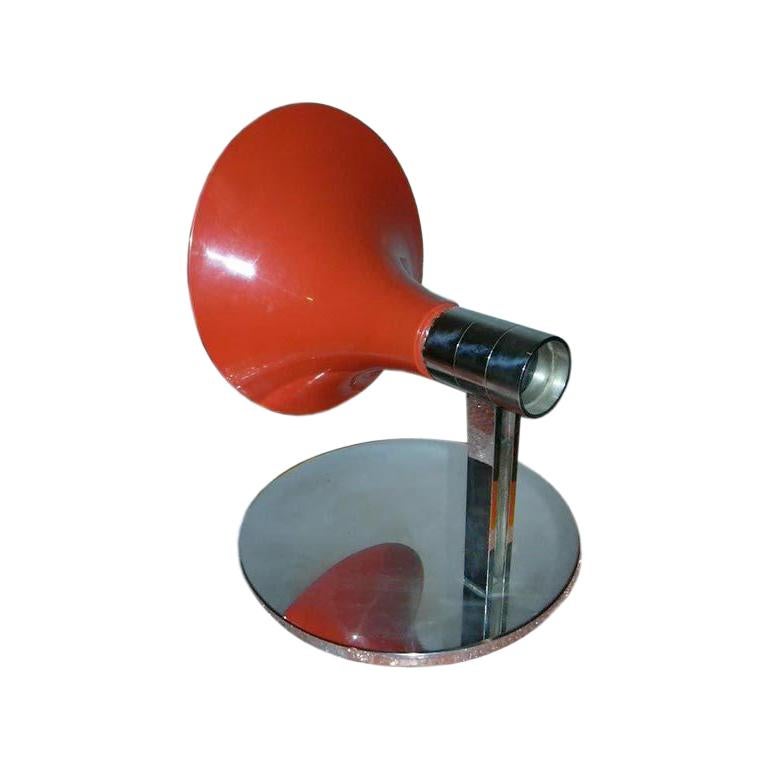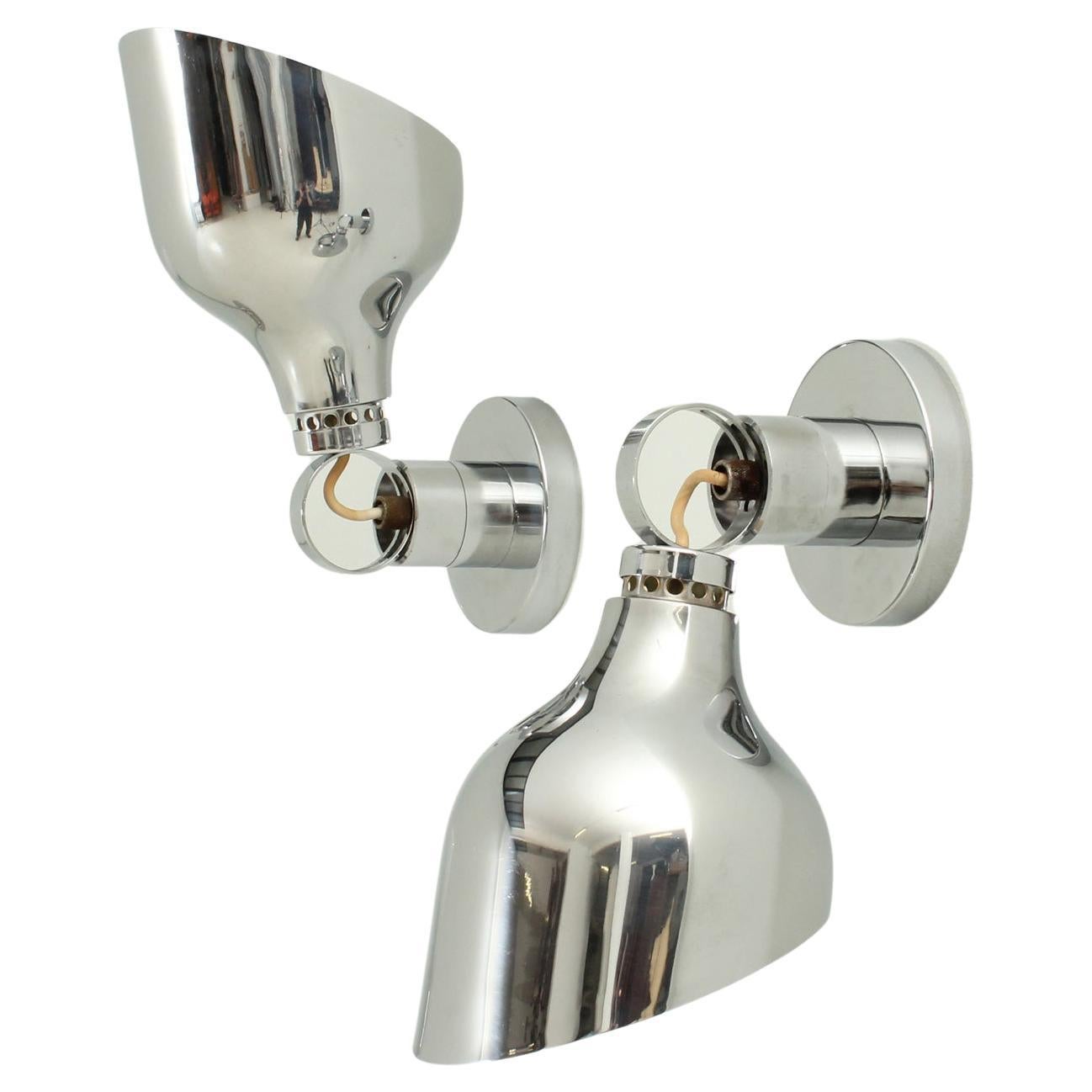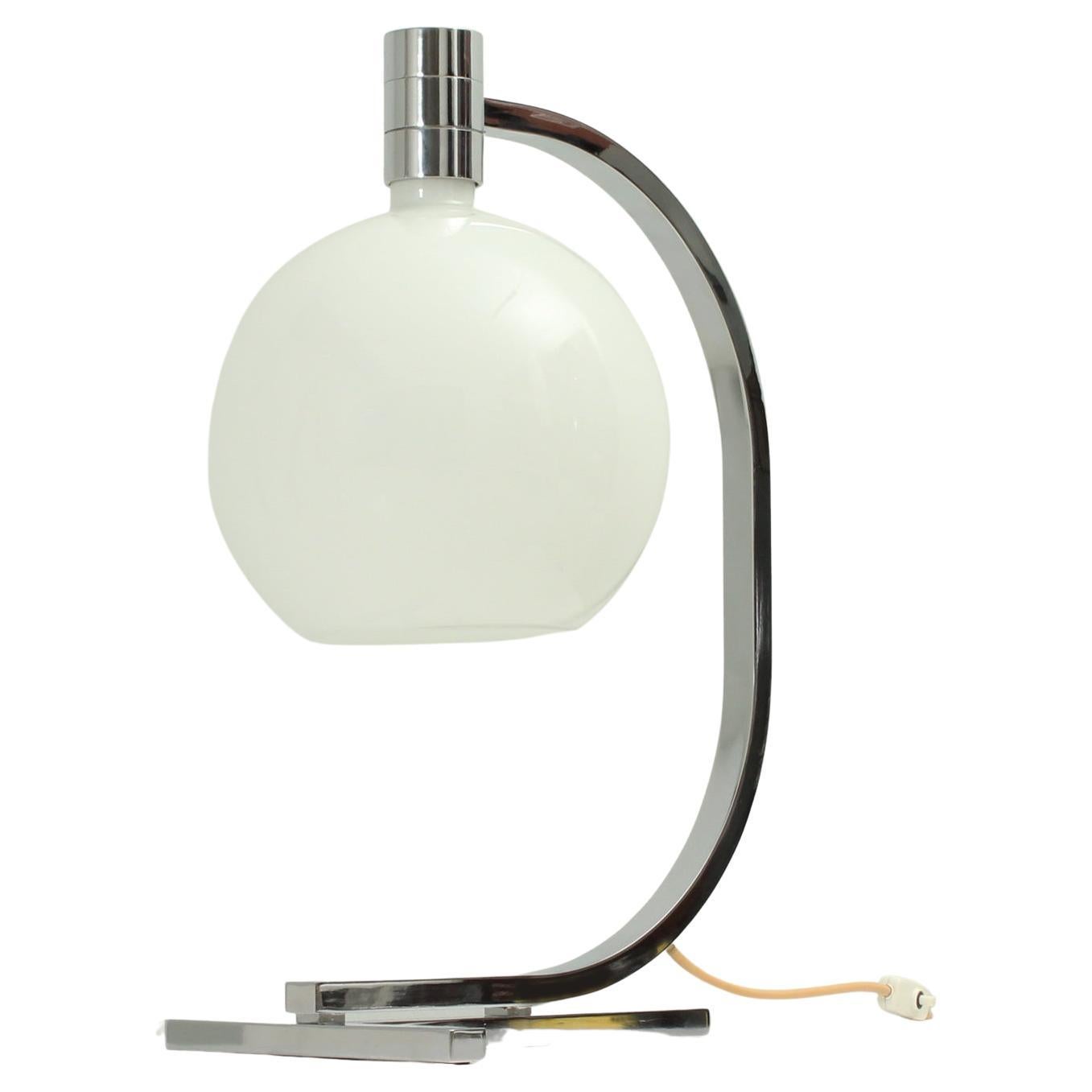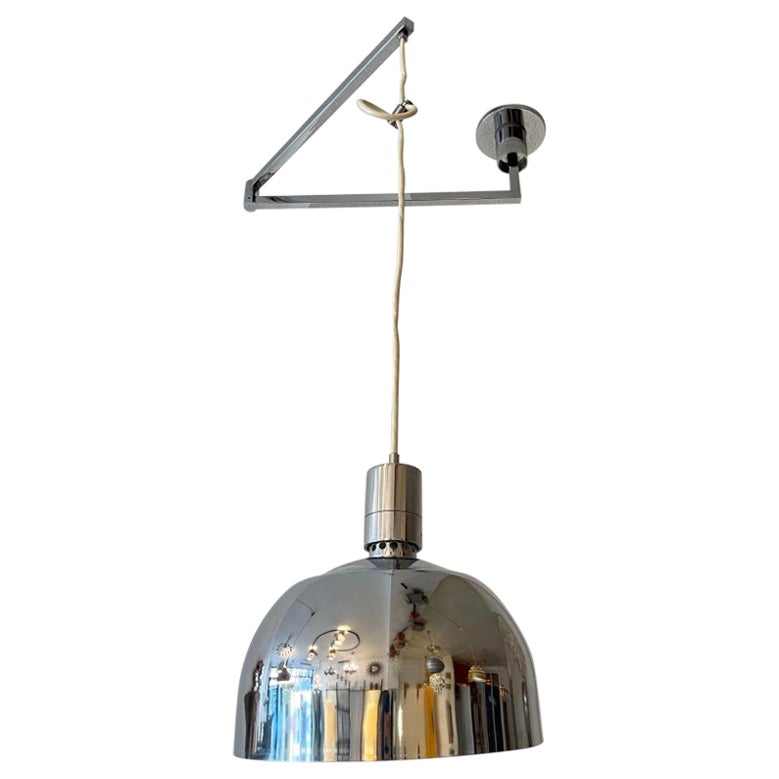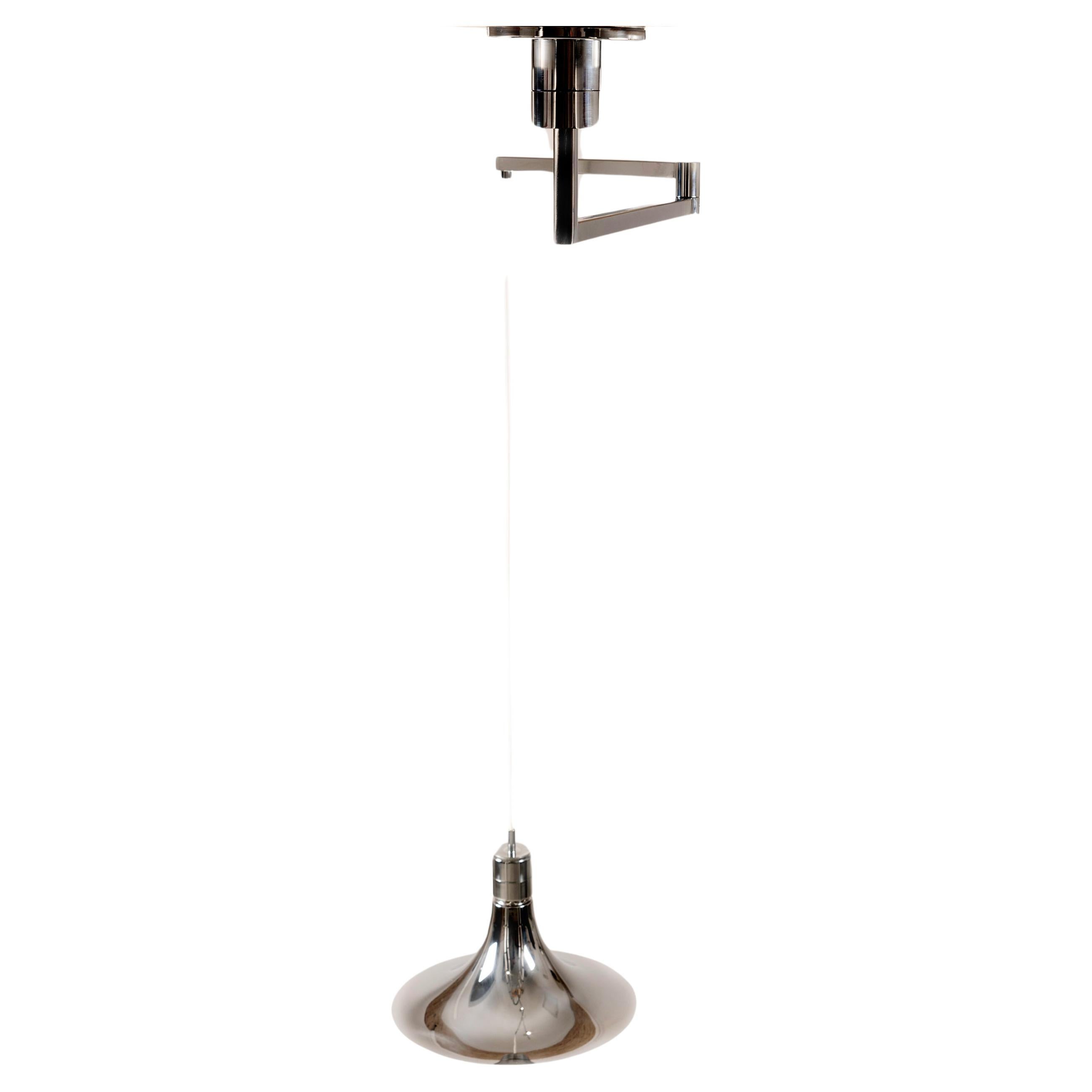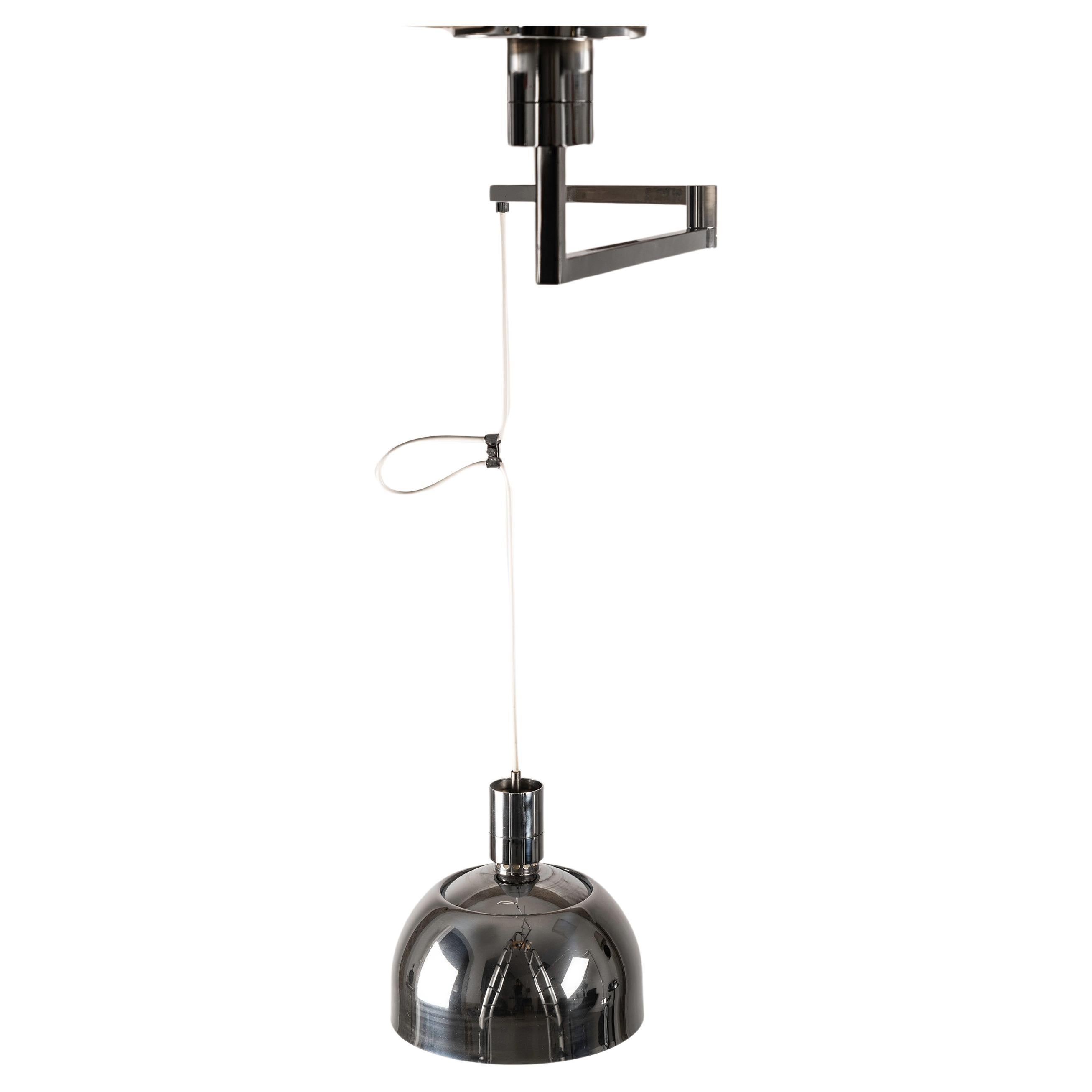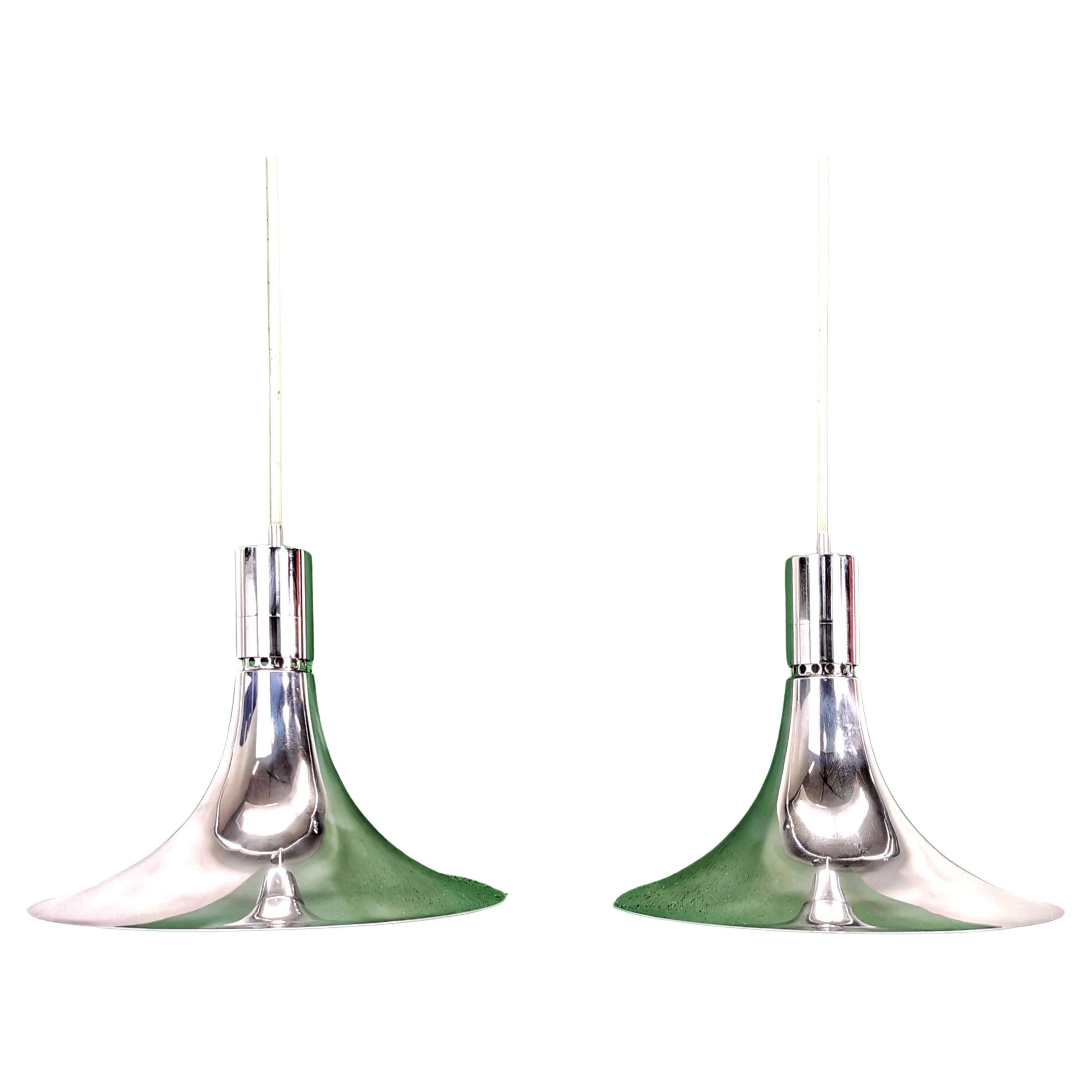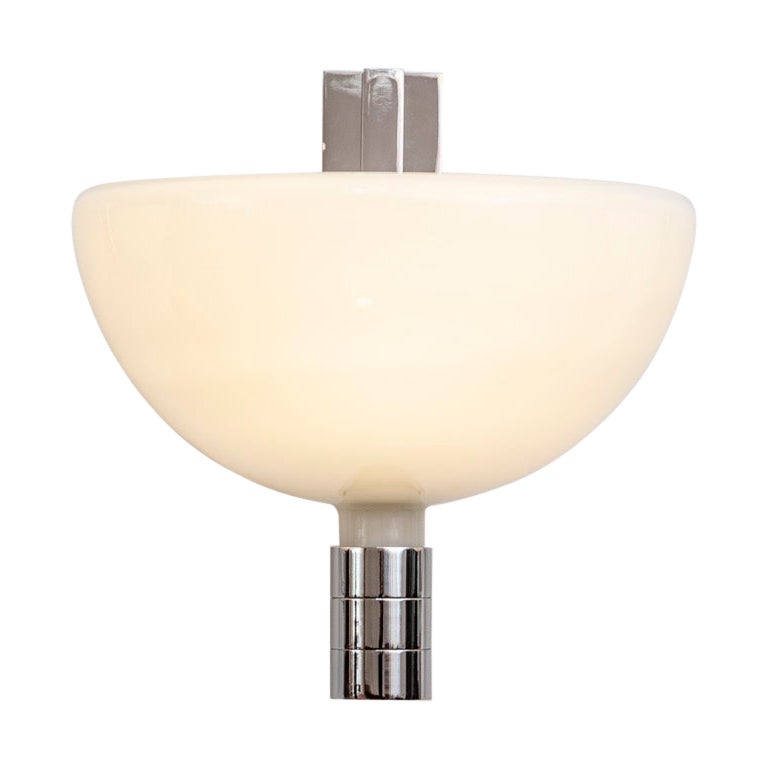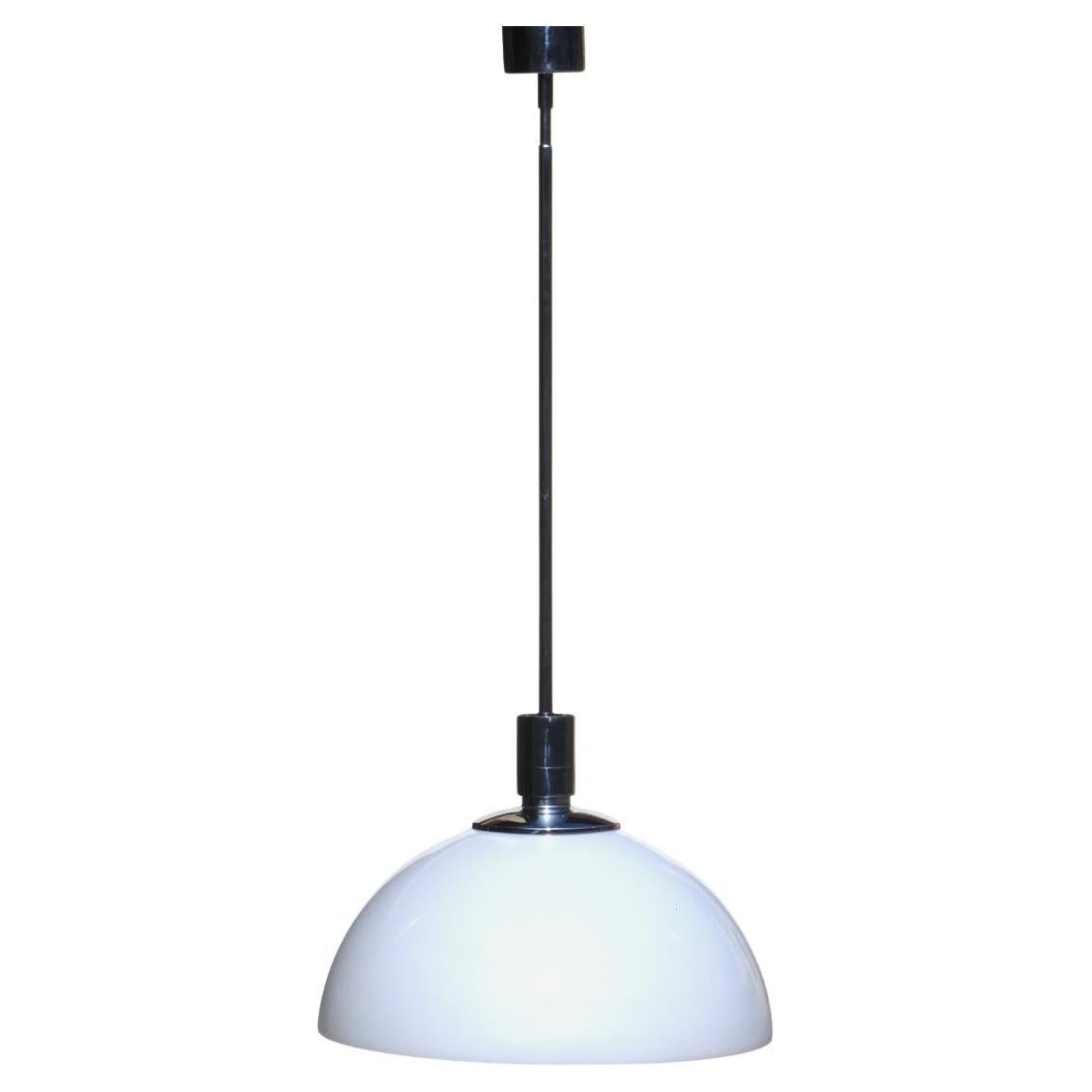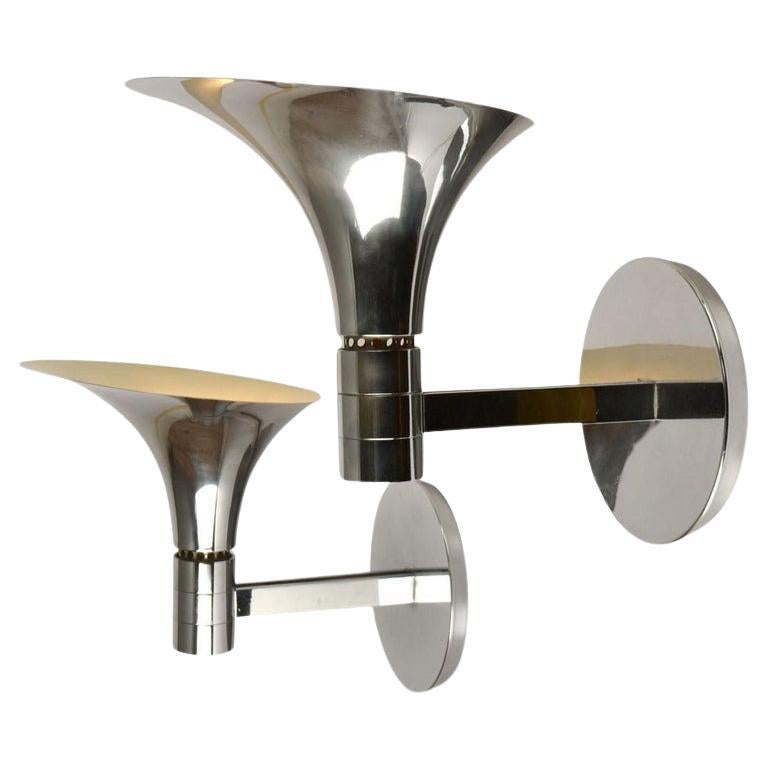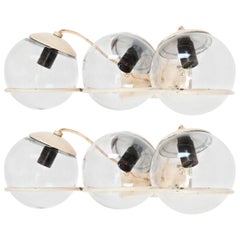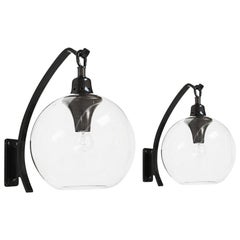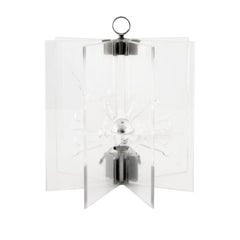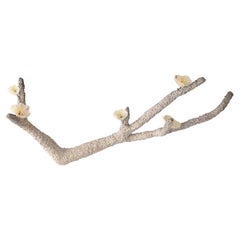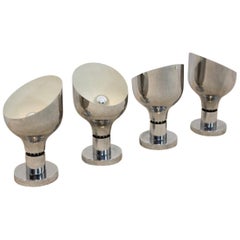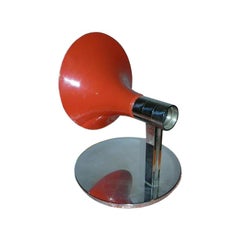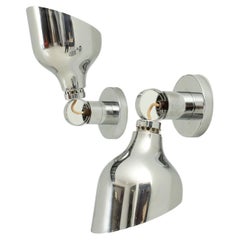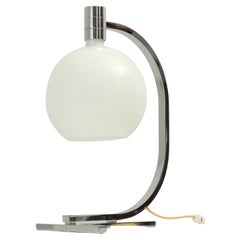
Pair of Mid-Century Silver Steel Chrome Sconces Series AM/AS by Franco Albini
View Similar Items
Want more images or videos?
Request additional images or videos from the seller
1 of 7
Pair of Mid-Century Silver Steel Chrome Sconces Series AM/AS by Franco Albini
About the Item
- Creator:Franca Helg, Antonio Piva and Franco Albini (Designer)
- Dimensions:Height: 16.54 in (42 cm)Width: 7.49 in (19 cm)Depth: 8.27 in (21 cm)
- Materials and Techniques:
- Place of Origin:
- Period:
- Date of Manufacture:1959
- Condition:Wear consistent with age and use.
- Seller Location:Barcelona, ES
- Reference Number:1stDibs: LU2374310264143
About the Seller
5.0
Recognized Seller
These prestigious sellers are industry leaders and represent the highest echelon for item quality and design.
Established in 2015
1stDibs seller since 2016
99 sales on 1stDibs
Typical response time: 15 hours
Authenticity Guarantee
In the unlikely event there’s an issue with an item’s authenticity, contact us within 1 year for a full refund. DetailsMoney-Back Guarantee
If your item is not as described, is damaged in transit, or does not arrive, contact us within 7 days for a full refund. Details24-Hour Cancellation
You have a 24-hour grace period in which to reconsider your purchase, with no questions asked.Vetted Professional Sellers
Our world-class sellers must adhere to strict standards for service and quality, maintaining the integrity of our listings.Price-Match Guarantee
If you find that a seller listed the same item for a lower price elsewhere, we’ll match it.Trusted Global Delivery
Our best-in-class carrier network provides specialized shipping options worldwide, including custom delivery.More From This Seller
View AllGino Sarfatti Italian Wall Light Pair of Triple Sconces 237/3 Mid-Century Modern
By Gino Sarfatti
Located in Barcelona, ES
Gino Sarfatti (1912-1985)
Pair of triple sconces model “237/3”
Manufactured by Arteluce
Italy, 1959
Painted iron, aluminum, glass.
Measurements:
28 cm x 46 cm x 21 H cm eac...
Category
Vintage 1950s Italian Wall Lights and Sconces
Materials
Iron
Pair of Italian Mid-Century Modern Wall Lamps “Boccia” by Caccia Dominioni Glass
By Luigi Caccia Dominioni
Located in Barcelona, ES
Luigi Caccia Dominioni (1913-2016)
Pair of wall lamps model “Boccia”
Manufactured by Azucena
Italy, 1969
Enamel steel, glass
20th century Italian design wall lights or sconces...
Category
Vintage 1960s Italian Wall Lights and Sconces
Materials
Steel
Table lamp model “524" by Franco Albini, Italy, 1952
By Franco Albini
Located in Barcelona, ES
Table lamp model “524”
Made in collaboration with Franca Helg
Manufactured by Arteluce
Italy, 1952
Openwork Perspex in a chrome frame
Measurements
41 Ø cm x 47h cm.
16,14 Ø in x 18,5...
Category
Vintage 1950s Italian Table Lamps
Materials
Chrome
Elissa Lacoste Contemporary Wall Light Series Epilith Lamps, in Steel and Resin
By Elissa Lacoste
Located in Barcelona, ES
Wall Light
From the series "Epilith lamps"
Manufactured by Elissa Lacoste
France, 2022
Steel, acrylic resin, fiberglass,
mineral aggregates, pigment,
silicone, electrical com...
Category
2010s French Wall Lights and Sconces
Materials
Steel
Franco Albini Mahogany mid-centry Italian Table Model TL-22 produced by Poggi
By Franco Albini
Located in Barcelona, ES
Franco Albini & Franca Helg.
Dining table model no. TL22.
Manufactured by Poggi,
Italy, 1958.
Mahogany.
Measurements:
180.3 cm x 104.1 cm x 73 H cm.
70.98 in x 40.98 in x 28.74 in.
Literature:
Giuliana Gramigna, Repertorio 1950/1980, Milan, 1985, p. 123.
Franco Albini, was born in 1905 and died in 1977. He spent his childhood and part of his youth in Robbiate in Brianza, where he was born. Albini, as an adolescent moved with his family to Milan. Here he enrolled in the Faculty of Architecture of the Polytechnic and graduated in 1929. He started his professional activity in the studio of Gio Ponti and Emilio Lancia, with whom he collaborated for three years. At the 1929 International Exhibition in Barcelona (where Gio Ponti curated the Italian pavilion and Mies van der Rohe realized that of Germany) and in Paris where, as Franca Helg recounted, he had the opportunity to visit the studio by Le Corbusier.
In those three years, the works he carried out are admittedly of the twentieth century imprint. It is the meeting with Edoardo Persico that marked a clear turning point towards rationalism and the approach to the group of editors of "Casabella". The partly ironic and partly very harsh comments of the Neapolitan critic to a series of drawings, made by Albini for the design of some office furniture, caused him a great disturbance. “I spent days of real anguish - Albini recalls - I had to answer all the questions. I also had a fever, a large and long fever. "
The meted provoked Albini to openen a professional studio in via Panizza with Renato Camus and Giancarlo Palanti. The group of architects began to deal with public housing by participating in the competition for the Baracca district in San Siro in 1932 and then building the IFACP neighborhoods: Fabio Filzi (1936/38), Gabriele D'Annunzio and Ettore Ponti (1939).
During this period, Albini also worked on his first villa (Pestarini), which Giuseppe Pagano, architect and critic of the time, presented as follows: “This coherence, which the superficial rhetoric of fashionable jugglers calls intransigence, and which is instead the basis of understood between the fantasy of art and the reality of the craft, in Franco Albini, it is so rooted that it transforms theory into a moral attitude ".
But it is above all in the context of the exhibitions that the Milanese master experienced his compromise between that "rigor and poetic fantasy" of which Pagano speaks, coining the elements that became a recurring theme in his . The opening in 1933 of the new Triennale headquarters in Milan, in the Palazzo dell'Arte, was an important opportunity to express the strong innovative character of rationalist thinking, a gym in which to freely experiment with new materials and new solutions, but above all a "method". "Cultivated as a communication laboratory, the art of setting up was for the rationalists of the first generation what the perspective had been for the architects of humanism: the field open to a hypothesis of space that needed profound reflections before landing the concreteness of the construction site ".
Together with Giancarlo Palanti, Albini on the occasion of the V Triennale di Milano set up the steel structure house (with R. Camus, G. Mazzoleni, G. Minoletti and with the coordination of G. Pagano), for which he also designed the 'furniture. At the following Triennale of 1936, Persico dided, together with a group of young designers gathered by Pagano in the previous edition of 1933, Franco Albini took care of the preparations of the home exhibition. The setting up of Stanza per un uomo, at that same Triennale, allows us to understand the acute and ironic approach of Albini, as a man and as a designer: "Celebrating the beauty of mechanics was the imperative to which, for example, the surprising displays by Franco Albini who managed, in the subtle way of a refined and rarefied style, to sublimate their practical content in the metaphysics of daring still lifes: flying objects which marked in the void refined frames and metal intricacies the nodes of a fantastic cartography where industry finally became art free from purpose ".
That same year Albini and Romano designed the exhibition of the Ancient Italian Goldsmithery: vertical uprights, simple linear rods, designed the space. A theme, of the "flagpole", seemed to be the center of the evolution of production and the creative process. The concept is reworked over time, with the technique of decomposition and recomposition typical of Albinian design: in the preparation of the Scipione Exhibition and contemporary drawings (1941) the tapered flagpoles, on which the paintings and display cases were hung, are supported by a grid of steel cables; in the Vanzetti stand (1942) they take the V-shape; in the Olivetti shop in Paris (1956) the polished mahogany uprights support the shelves for the display of typewriters and calculators.
The flagpole is found, however, also in other areas. In the apartments he designed, it is used as a pivot on which the paintings can be suspended and rotated to allow different points of view, but at the same time as an element capable of dividing the spaces. The Veliero bookcase...
Category
Mid-20th Century Italian Mid-Century Modern Dining Room Tables
Materials
Mahogany
Franco Albini Midcentury Brazilian Dining Chair jacaranda and fabric
By Franco Albini, Forma Brazil
Located in Barcelona, ES
Franco Albini (1905-1977)
Six dining chairs with arms (Price per chair)
Manufactured by Forma Brazil
Brazil, 1950s
Solid jacaranda wood and fabric
Measurements
58 cm x 55 cm x 77 ...
Category
Mid-20th Century Brazilian Mid-Century Modern Dining Room Chairs
Materials
Upholstery, Jacaranda
You May Also Like
Chrome AM/AS Series Ceiling Spotlight by Franco Albini, Helg, Piva for Sirrah
By Sirrah, Franca Helg, Antonio Piva and Franco Albini
Located in Voorburg, NL
Rare and sophisticated ceiling spotlight, designed by Franco Albini, Franca Helg and Antonio Piva for Sirrah and produced in Italy for the AM/AS series. We have four of these beautiful large...
Category
Mid-20th Century Italian Mid-Century Modern Wall Lights and Sconces
Materials
Chrome
Italian 1969 Albini Series AM/AS Sconce
By Franca Helg, Antonio Piva and Franco Albini, Sirrah
Located in Los Angeles, CA
This published sconce is part of the series AM/AS that Albini designed for La Sirrah. Characteristic of this series is the plug for the electric current is ceramic (see photo). The AM/AS series also featured floor lamps...
Category
Vintage 1960s Italian Wall Lights and Sconces
Five AM/AS Sconces by Franco Albini for Sirrah, Italy, 1969
By Franco Albini, Franca Helg, Antonio Piva and Franco Albini
Located in Barcelona, ES
Five sconces in chrome steel designed by italian architects Franco Albini, Franca Helg and Antonio Piva as part of the AM/AS lamps series for the italian company Sirrah in 1969. They...
Category
Vintage 1960s Italian Mid-Century Modern Wall Lights and Sconces
Materials
Metal, Chrome
Franco Albini AM/AS Table Lamp, Italy, 1969
By Sirrah, Franca Helg, Antonio Piva and Franco Albini
Located in Barcelona, ES
Table or desk lamp designed by Italian architects Franco Albini, Franca Helg and Antonio Piva as part of the AM/AS lamps series for the italian company Sirrah in 1969. Chromed steel ...
Category
Vintage 1960s Italian Mid-Century Modern Table Lamps
Materials
Steel, Chrome
Italian 1969 Franco Albini AM/AS Table Lamp
By Sirrah, Franca Helg, Antonio Piva and Franco Albini
Located in Los Angeles, CA
Published. An example of Franco Albini`s table lamps for the AM/AS series, this table lamp boasts a heavy chromed brass shade with original nickel base.
Category
Vintage 1960s Italian Table Lamps
Materials
Chrome
Vintage Swing Arm Chrome Ceiling Lamp "AM/AS" by Franco Albini Italy, circa 1969
By Sirrah, Franca Helg, Antonio Piva and Franco Albini
Located in Geneva, CH
This well-constructed pendant lamp is part of a series named ‘AM/AS’ that included table, wall, ceiling and suspension lamps, and were designed by an influential Italian trio Franco Albini, Franc Helg and Antonio Piva for Sirrah in 1969. This particular item has a spherical shaped adjustable shade executed in chromed metal that beautifully reflects the surroundings. The interior is finished with off-white matt...
Category
Vintage 1960s Italian Chandeliers and Pendants
Materials
Steel, Chrome
